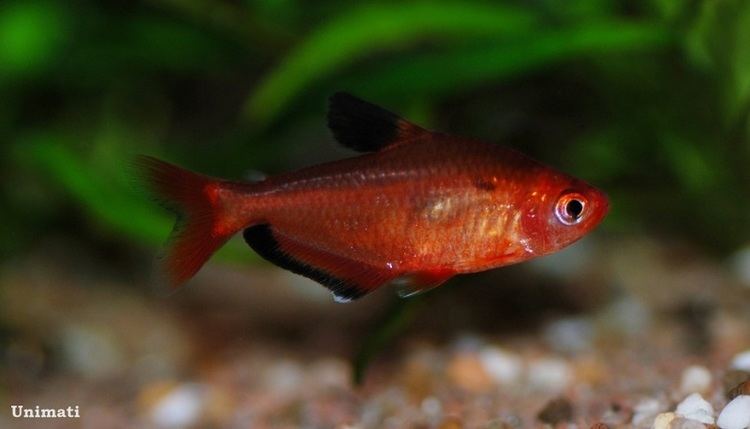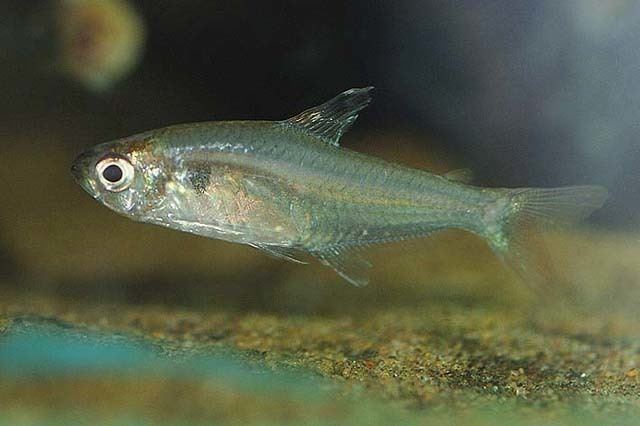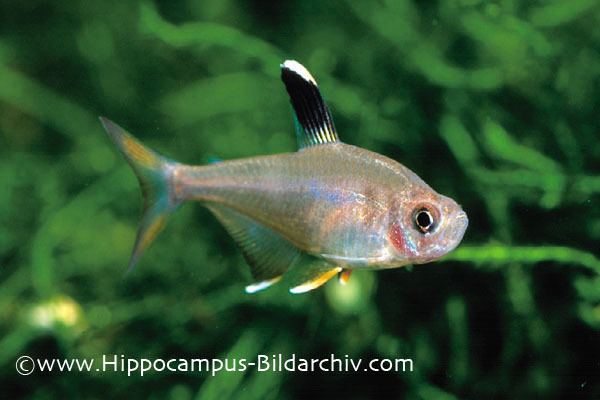Phylum Chordata Scientific name Hyphessobrycon Rank Genus | ||
 | ||
Lower classifications Serpae tetra, Black neon tetra, Black phantom tetra, Ember tetra, Flame tetra | ||
Green grey aquarium day 36 new fish 92 tetra ember hyphessobrycon amandae
Hyphessobrycon is a genus of freshwater fish in the family Characidae of order Characiformes. These species are among the fishes known as tetras. The genus is distributed in the Neotropic ecozone from southern Mexico to Río de la Plata in Argentina. Many of these species are native to South America; about half a dozen species are from Central America and a single species, H. compressus is from southern Mexico. All small fishes, the Hyphessobrycon tetras reach maximum overall lengths of about 2–7.5 cm (0.8–3.0 in). There is great anatomical diversity in this genus. They are generally of typical characin shape, but vary greatly in coloration and body form, many species having distinctive black, red or yellow markings on their bodies and fins. These species are generally omnivorous, feeding predominantly on small crustaceans, insects, annelid worms and zooplankton. When spawning, they scatter their eggs and guard neither eggs nor young.
Contents
- Green grey aquarium day 36 new fish 92 tetra ember hyphessobrycon amandae
- The ember tetra hyphessobrycon amandae
- Taxonomy
- Etymology
- Relationship to humans
- Species
- References
The ember tetra hyphessobrycon amandae
Taxonomy

This large genus of characins includes over 140 species. The systematics of Hyphessobrycon are still largely unresolved. Six groups within this genus have been recognized based on color patterns alone. With no phylogenetic analysis of this genus, species are placed into this genus as anatomically defined by Carl H. Eigenmann in 1917. By this definition, Hyphessobrycon is identified by the presence of an adipose fin, incomplete lateral line, two tooth series in the premaxilla, with the teeth of the external series continuous in a single series, teeth not strictly conical, preventral scales arranged in more than one row and lack of scales in the caudal fin. The characteristic of extension of scales onto the caudal fin that differentiates this genus from Hemigrammus is not satisfactory as it occurs in intermediate conditions.

This genus is not monophyletic. A monophyletic group within Hyphessobrycon has been hypothesized, termed the rosy tetra clade; this group is based upon coloration pattern and the shape of dorsal and anal fins of males. Recognition of monophyletic groups among Hyphessobrycon species is complicated by the difficulty in finding characters useful for hypothesis of relationships among the species. Traditional characters used to identify Hyphessobrycon are phylogenetically unreliable.
Etymology

The generic name, Hyphessobrycon, is of slightly uncertain origin. The second part derives from the Greek βρύκω (to bite); the first, derives from an ostensible Greek hyphesson, which may be an error for υπελάσσων (slightly smaller).
Relationship to humans

None of the roughly one hundred fishes in the genus has been rated by the IUCN, but many species have small distributions and at least one, H. flammeus, is believed to be extinct in the wild. These species has occurrence in streams and coastal rivers of Rio de Janeiro State, in Guanabara Bay basin, middle rio Paraíba do Sul basin and rio Guandu basin. In the upper rio Tietê drainage (upper rio Paraná basin, São Paulo State) it is found around of the metropolitan region of São Paulo city. Many Hyphessobrycon species are popular aquarium fish.
Species
There are currently 146 recognized species in this genus:

